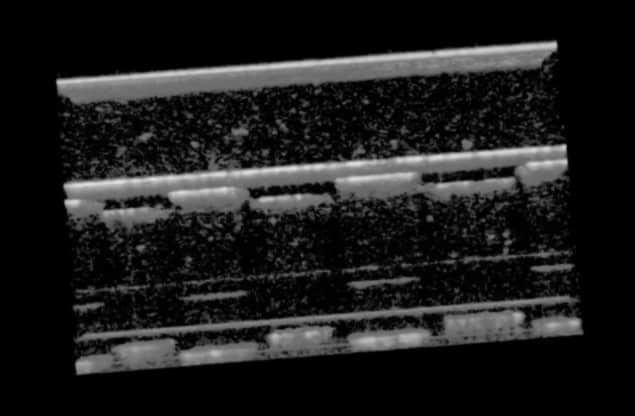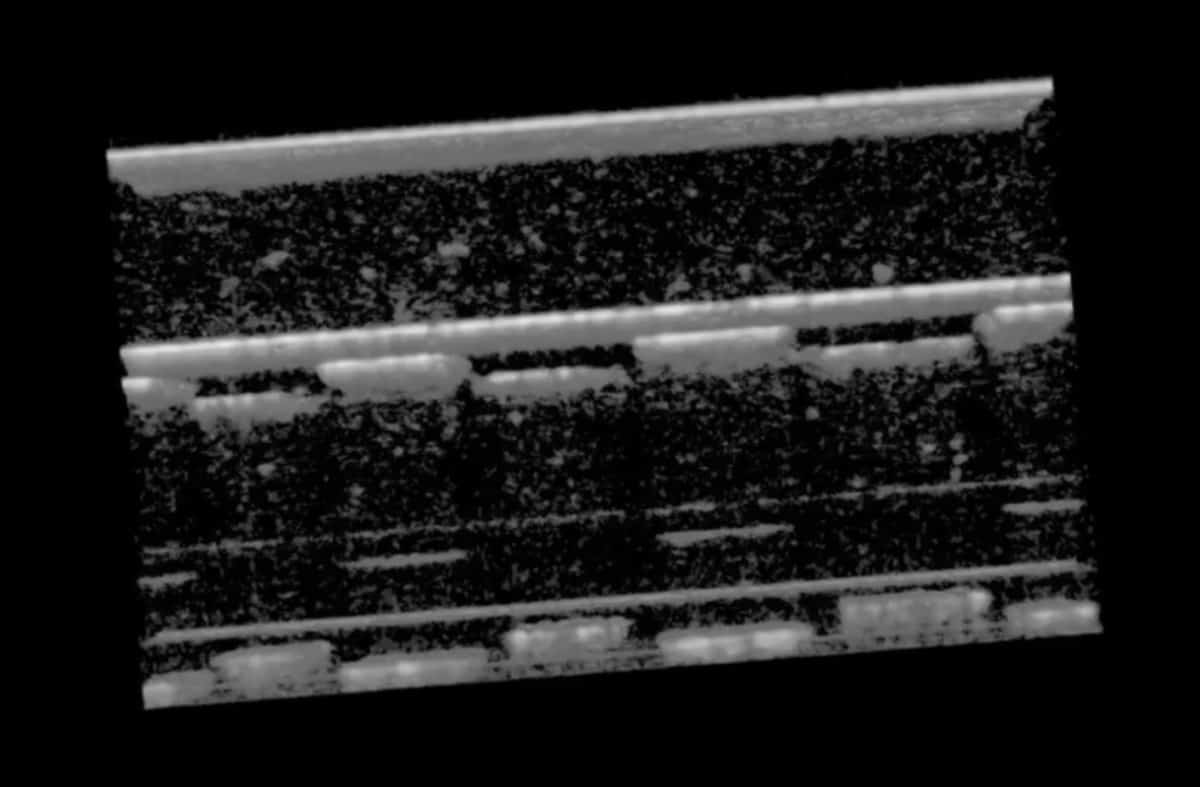
Entangled pairs of photons have been used by physicists in Germany and Austria to image structures beneath the surfaces of materials that scatter light. The research was led by Aron Vanselow and Sven Ramelow at Humboldt University of Berlin and achieved high-resolution images of the samples using “ultra-broadband” photon pairs with very different wavelengths. One photon probed the sample, while the other read out image information. Their compact, low-cost and non-destructive system could be put to work inspecting advanced ceramics and mixing in fluids.
Optical coherence tomography (OCT) is a powerful tool for imaging structures beneath the surfaces of translucent materials and has a number of applications including the 3D scanning of biological tissues. The technique uses interferometry to reject the majority of light that has scattered many times in an object, focussing instead on the rare instances when light only scatters once from a feature of interest. This usually involves probing the material with visible or near-infrared light, which can be easily produced and detected. Yet in some materials such as ceramics, paints, and micro-porous samples, visible and near-infrared light is strongly scattered – which limits the use of OCT. Mid-infrared light, however, can penetrate deeper into these samples without scattering – but this light is far more difficult to produce and detect.
Vanselow, Ramelow and colleagues circumvented this problem by using pairs of quantum-mechanically entangled photons in which one photon is mid-infrared and the other is either visible or near-infrared. The entangled pairs are generated by firing a “pump” laser beam at a specialized nonlinear crystal developed by the team. This creates entangled pairs of photons – one mid-infrared “idler” photon and one visible/near-infrared “signal” photon.
Idler photons
The nonlinear crystal sits in an interferometer and in one arm of the interferometer, the light is split so the idler photon strikes the object to be imaged whereas the signal photon is reflected by a mirror. The other arm of the interferometer has a detector that measures the signal photons. Because the two photons are entangled, information about the idler photon (and hence the object) can be gleaned from a measurement on the reference photon. This information is used to create an image of the object.

Quantum-inspired detection method generates high-quality OCT images
The team tested the performance of their imaging system using samples that included paint layers and alumina ceramic stacks etched with microchannels. They produced both 2D and 3D images of the samples, down to microscale resolutions. Altogether, this improved the signal-to-noise ratio of conventional mid-infrared OCT by a factor of one million. This agreed with the team’s theoretical prediction for their setup’s best possible performance – meaning it was only limited by intrinsic quantum noise.
According to the team, the technology could be used to see inside materials inaccessible to other non-destructive techniques. Applications could include studies of alumina-based ceramics, which are used for drug testing and DNA detection, owing to the well-defined sizes and high densities of their pores. Elsewhere, the updated form of OCT could be used to make real-time images of microscale mixing in liquids, precisely engineered 3D-printed ceramics, and quality control for pharmaceutical coatings.
The research is described in Optica.
